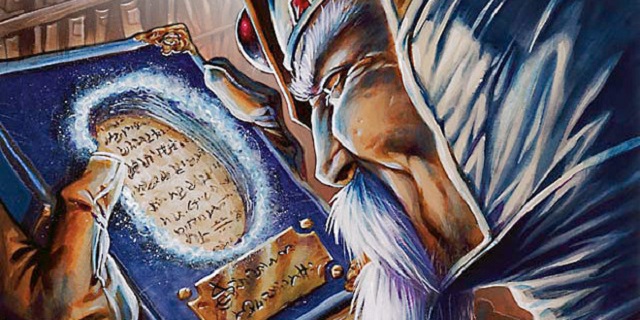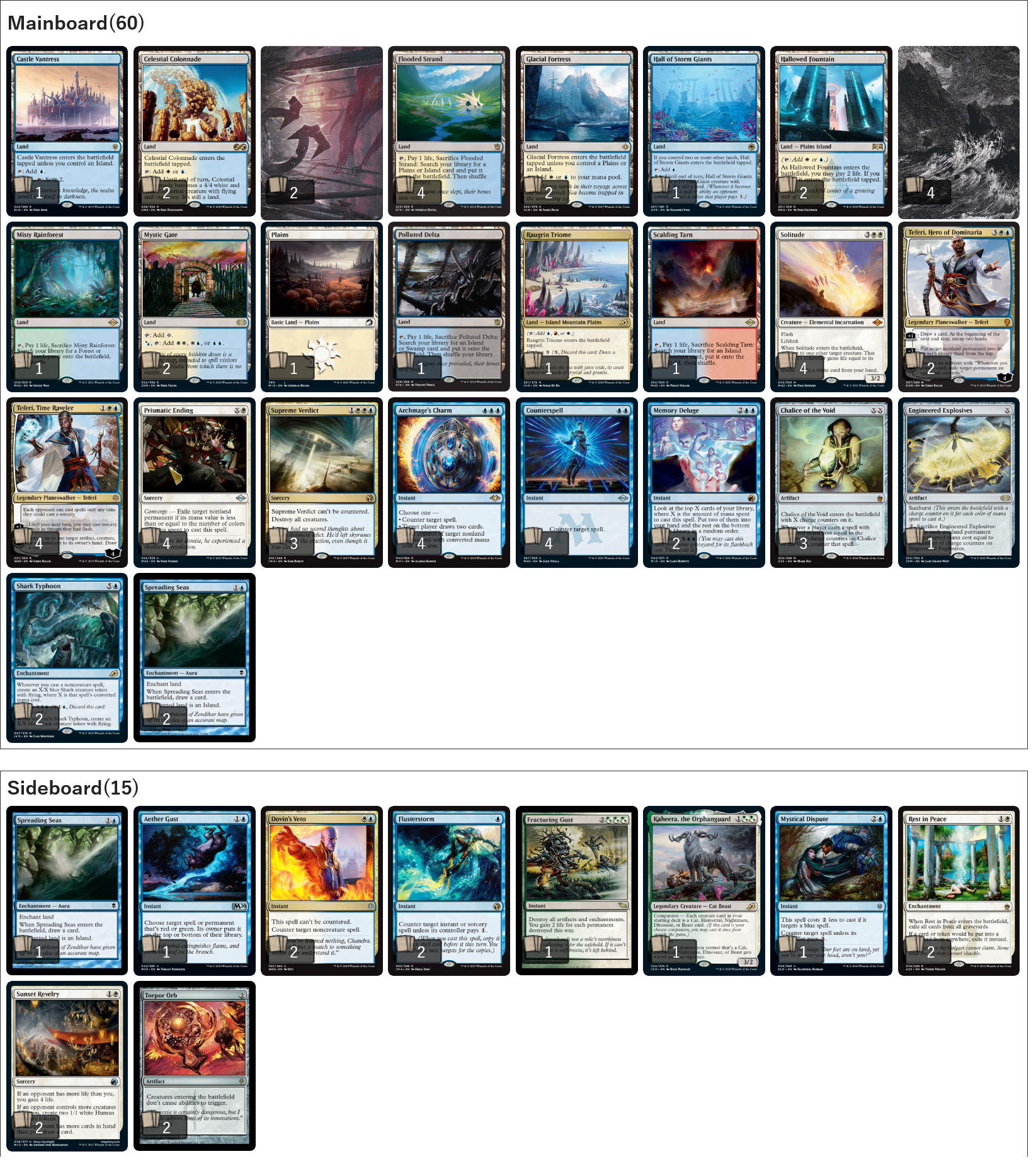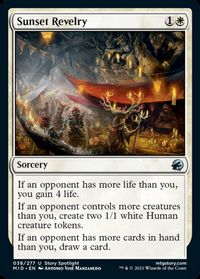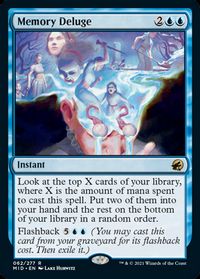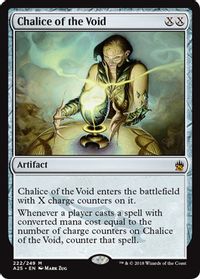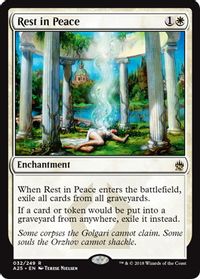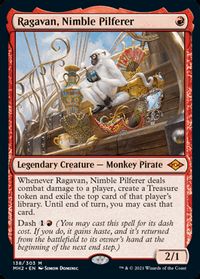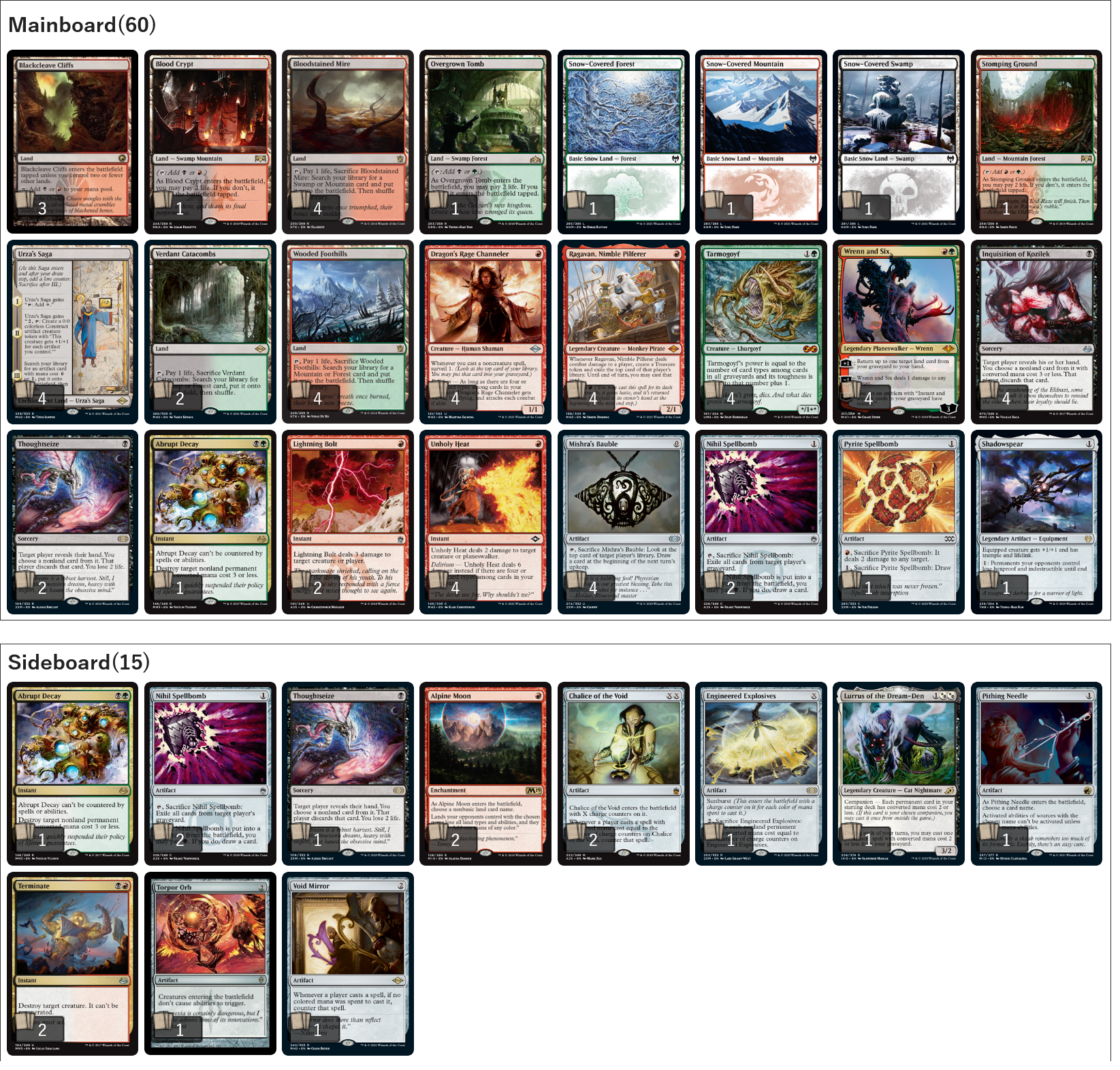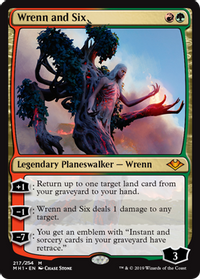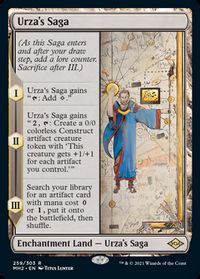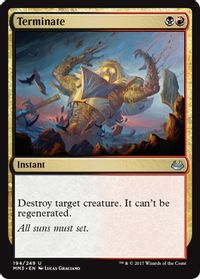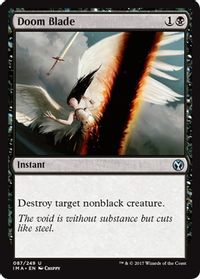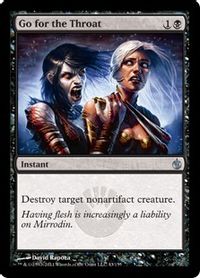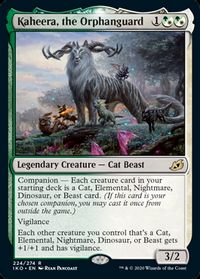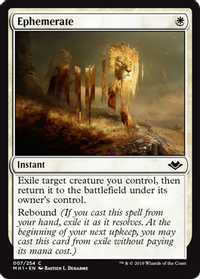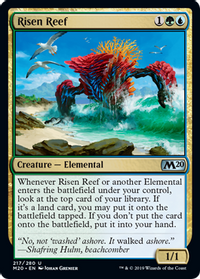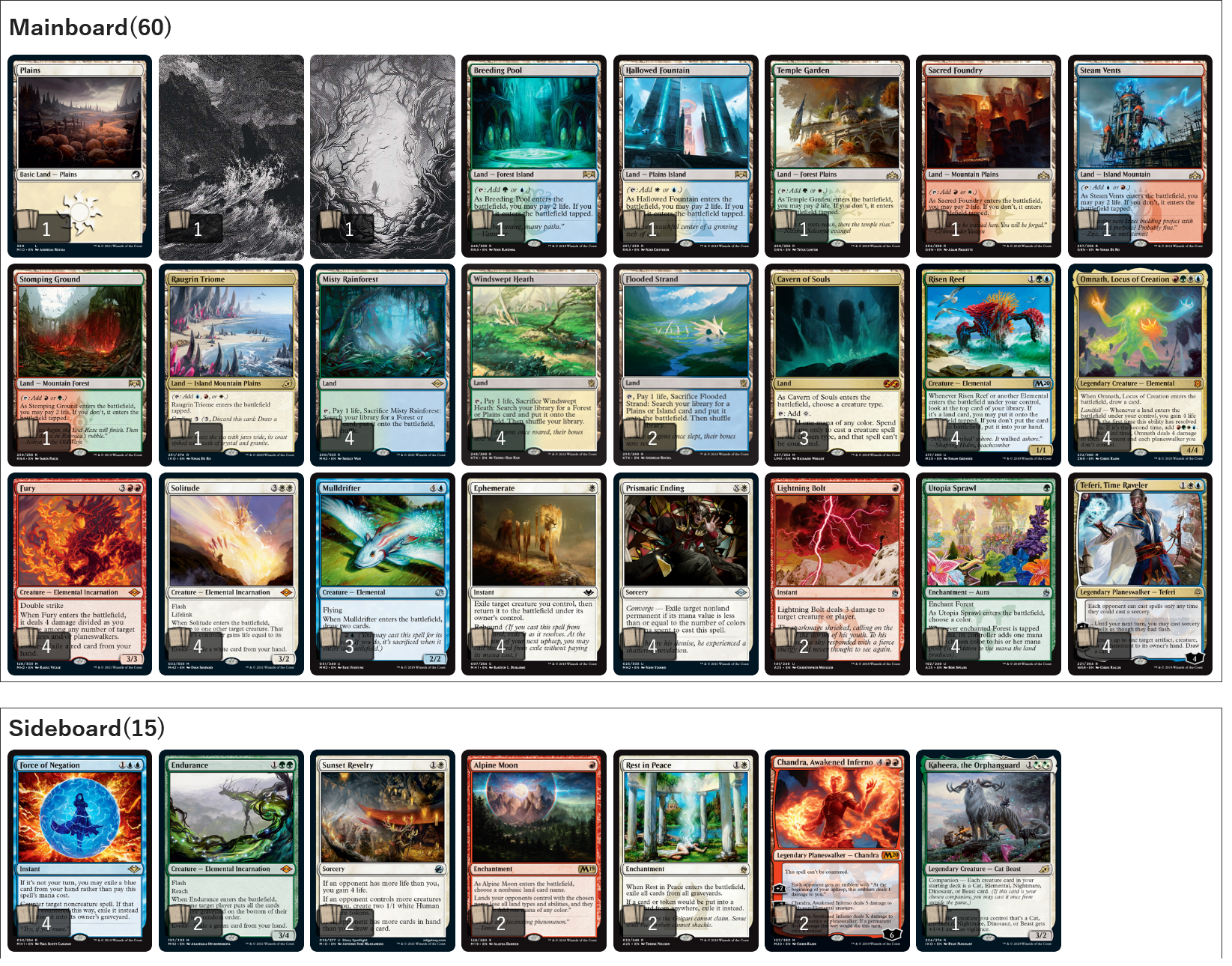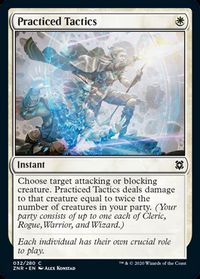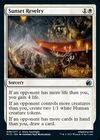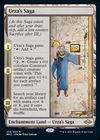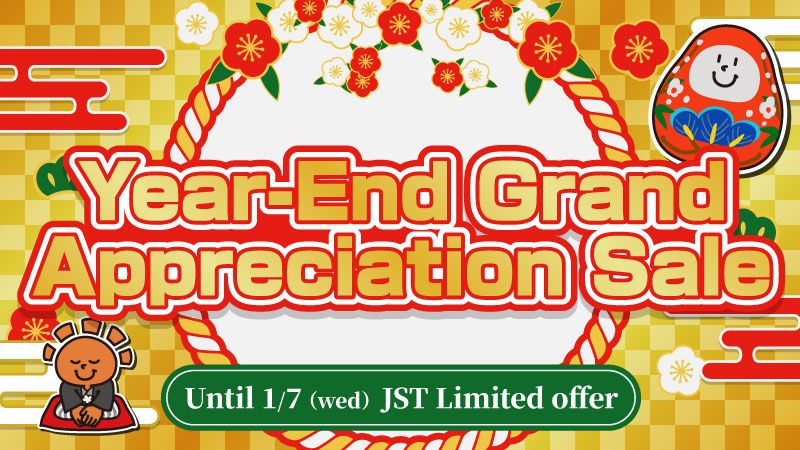Introduction
With time passing and new sets releasing, Modern continues to evolve! Modern Horizons 2 effects will keep the format in churn weekly for a long time and let me write articles like this for the foreseeable future. Innistrad: MIdnight Hunt provided Modern with a few new cards in the format, too – let’s start with a deck that picked up two upgrades from the new set:
Azorius Control
New tools from the new set combined with the prolonged Magic Online success of the legendary control player Guillaume Wafo-Tapa means that control is back in full force. New cards are of course welcome, but in a way serve more as a way to bring attention to the deck, as 《Memory Deluge》 is just a slightly better 《Fact or Fiction》 and 《Sunset Revelry》 is an upgrade to 《Timely Reinforcements》.
What’s attractive to me about Azorius is that it’s a strong home for both 《Chalice of the Void》 and 《Rest in Peace》, two very effective hate cards right now. 《Prismatic Ending》 means you don’t even have to skip one-mana removal to play 《Chalice of the Void》!
There’s a lot of variance between decklists and I can’t for the life of me understand what incentivizes folks to play 《Shark Typhoon》 in Modern, but Azorius seems to be a decent deck in the format currently.
《Ragavan, Nimble Pilferer》
In July I talked about how lowering the cost of the best midrange threats changes the picture, and the last two months certainly highlighted that idea.
If I had to pick out the one defining card in the format, 《Ragavan, Nimble Pilferer》 would definitely be a contender. At times frustratingly snowbally for a one-drop, 《Ragavan, Nimble Pilferer》 puts a heavy burden on decks to play ample cheap, preferably instant speed removal, just in case they happen to be on the draw facing the Monkey. Given the “good cards only” nature of midrange decks, they only get better as time passes, lists get refined, and technology against problematic matchups gets discovered.
One of those recent evolutions of Ragavan decks is the Jund 《Urza’s Saga》 versions, like the one that won last Saturday’s Showcase Challenge on Magic Online.
Jund Saga
Jund is built on the principle of playing “good cards only”, and all the good cards at that. 《Urza’s Saga》 isn’t accompanied by many other artifacts, but it’s included on that principle. With so few artifacts, the first few constructs are going to be underwhelming.
When combined with colorless mana having very few uses in the deck, 《Urza’s Saga》 plays differently here than it typically does. You’ll rarely want to play it out on turn two and prioritize pumping out constructs, instead of playing it out once you’ll run out most of your hand. Synergy with 《Wrenn and Six》 assures Jund can grind virtually endlessly.
In my experience when playing the deck, I had decent results, but I frequently wondered how much does the 《Wrenn and Six》/《Urza’s Saga》 combo actually brings to the table. Often I felt carried by a solid core and 《Tarmogoyf》 invulnerability to 《Unholy Heat》 rather than anything else; on the other hand, 《Wrenn and Six》‘s and 《Urza’s Saga》‘s exotic typings are what enables the biggest 《Tarmogoyf》 (and the crucial 7t toughness). Regardless, the deck is clearly capable of placing, and it highlights the red midrange’s ability to evolve and adapt that I talked about.
Personally, I think those Jund decks should pay close attention to their cards casting costs. 《Terminate》 is a stock option at this point, but slightly worse options like 《Doom Blade》 and 《Go for the Throat》 should be considered, as being castable off 《Urza’s Saga》 is a huge deal.
All being said, don’t expect 《Ragavan, Nimble Pilferer》 + secondary threat + a pile of interaction deck recipes to go anywhere in the near future. Learning the ins and outs of virtually any Ragavan deck should be a good strategy if you are aiming to win.
Elementals
That made me think; aren’t we all just making a mistake by not playing 《Ragavan, Nimble Pilferer》?
Thinking that, upon a suggestion from some of my discords members, I tried to do the obvious non-obvious thing and just added it to Elementals.
The results of the experiments weren’t directly great, and it seems that the answer to the question I posed is “not necessarily” – losing 《Kaheera, the Orphanguard》, and straining the mana were sizable downsides. 《Ragavan, Nimble Pilferer》 had no synergy with 《Ephemerate》 or 《Risen Reef》, two cards I considered key when first iterating on the deck.
Overall, it wasn’t too good, but that specifically helped me learn a few lessons about Elementals and my shortcomings as a player and deck builder. Before trying 《Ragavan, Nimble Pilferer》, I wasn’t even considering boarding out those cards almost ever. Less synergy in the deck just made me *think* about how sacred 《Ephemerate》 really is in the deck.
Elementals is a deck I spent a good portion of my last two months of streaming on. Despite that, out of myriads of available sideboard plans, I have explored relatively little of that space, settling for plans early because they seemed to work.
It made me realize that one thing that frequently holds me back in Magic is tunnel vision and stubbornness. It’s especially apparent in my sideboarding. Over the years of playing the game, while working on a deck, I’ll settle onto a sideboard plan I like after a few matches, get comfortable, and will just keep mindlessly sideboarding the same way over and over, grinding match after match, resubmitting my deck just to get into the next game as soon as possible.
Trouble comes when the old and trusty plan starts to fail you. Perhaps you feel like you keep getting unlucky, yet somehow games always play out similarly? It’s entirely possible that your strategy is just ill-suited for the matchup. Maybe 《Ephemerate》 specifically was great when people didn’t know it was coming, leading to many unrecoverable blowouts against removal, while not being as useful once Elementals become a known part of the metagame?
4C Elementals
Think About Sideboard Tactics
Grinding matches is not necessarily the best you can do when it comes to learning and extracting information from your games. It’s important to keep evaluating your options. When playing low-stake games, in the long run it might be very beneficial to be aggressive with your sideboard tactics.
Commonly, you’ll hear that players know what to sideboard into their decks, but they don’t know what to sideboard out. Try examining your cards very closely. Does your card excel in many scenarios, or just in very specific ones? Do you always hope to draw more copies of your card? Does drawing a lot of the card in question seem to correlate with winning the game? If you want to learn, you can try cutting entire playsets of cards you are unsure about, instead of keeping it “safe” and trimming. How much do you miss the card when you cut it?
Against Rakdos, Izzet, or Grixis Ragavan Midrange decks, Evoke/《Ephemerate》 synergy is not very relevant and not very good, as your opponent will most likely play one threat at a time and it’s very fragile. You’ll also likely face a smattering of cheap interaction – it’s obviously hard to protect a 3 mana 《Risen Reef》 or a 4 mana 《Omnath, Locus of Creation》 in face of one-mana removal spells and potentially discard spells; are you going to just wait for fo an extra land drop your creatures? It’s not always feasible.
Moreover, how do I lose games in those types of matchups? Flooding out is a big issue, and 《Ephemerate》 is entirely dependant on your other cards. As such, it contributes to flood. Discard spells can take care of it if you are beating around the bush too much, or more dangerously, discard can take care of your threats, leaving 《Ephemerate》 alone and useless. Does occasionally blowing out removal spells and gaining card advantage worth outweigh all of the cons?
Using the powers of facts and logic like this, it becomes apparent that 《Ephemerate》 is amongst the worse cards you can submit in your post-board configuration. Despite now that conclusion being apparent, it wasn’t like this from the start!
Again, to reiterate, the resulting lesson is not just to cut 《Ephemerate》 against red Midrange decks – it is that I should have been open to that idea from the start and probably should have tried it in practice. Instead in two months I spent streaming this deck very often, I never tried such a strat, instead of repeating the same imperfect sideboard strat over and over, wondering why I flood so much.
Every time there’s a “never cut it” card in a sideboard guide, I’d recommend both for you and me to stop and consider: is it really?
It is all tangential to the most important fact of sideboarding that bears repeating over and over – you should be trying to present a coherent deck of 60 cards that matches up in the best possible way; not merely a collection of cards. Heuristics and mental shortcuts are useful tools, but it’s important not to lose perspective.
A good way to avoid such a pitfall is to keep discussing your sideboard plays with others, actively playing the deck. Different perspectives can be very valuable, and in my case, I found verbalizing my reasoning for sideboarding in a certain way sometimes uncovers inconsistencies or flaws in my plans. Challenge your own ideas, and most importantly, keep asking yourself why – that’s the only real way to improve, even if sometimes our laziness gets the best of us!


